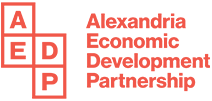Alexandria’s entrepreneurs are now served by two expert organizations!
Thank you for all your support of the Alexandria SBDC, and we look forward to seeing you at Mason or in Alexandria soon!


Alexandria’s entrepreneurs are now served by two expert organizations!
The Mason SBDC has a stellar track record in helping entrepreneurs and small businesses achieve their goals throughout Northern Virginia. To access the Mason SBDC, simply visit their website at www.masonsbdc.org or reach out to their team at help@MasonSBDC.org. They will be delighted to guide you through the available services, discuss your specific needs, and provide the necessary support to empower your business success.
The Alexandria Economic Development Partnership offers the counseling you rely on and other new services tailor-made for Alexandria businesses.
Sign up for our monthly small business newsletter or visit our Alexandria Small Business page to get help starting, managing, or growing your small business.
Thank you for all your support of the Alexandria SBDC, and we look forward to seeing you at Mason or in Alexandria soon!